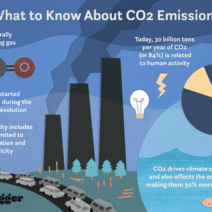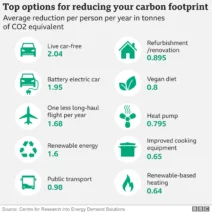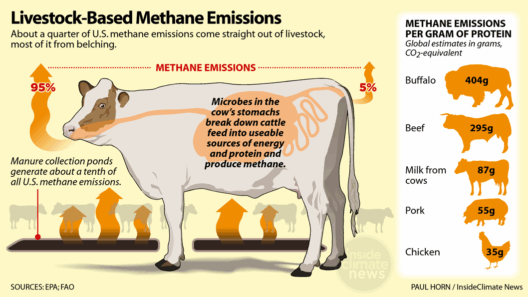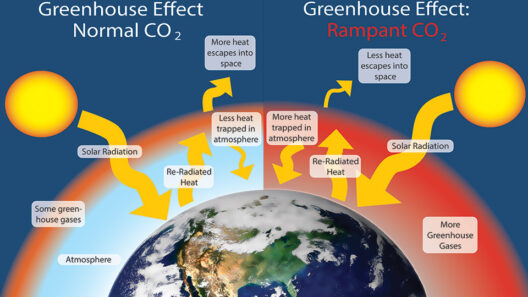Climate change looms large on the horizon of our collective future, presenting challenges that seem insurmountable at times. Have you ever paused to ponder: what if we truly embraced the eclectic potential of both local initiatives and global strategies? The urgency of the issue necessitates an exploration of realistic solutions that can be executed at various scales, from the intimate realms of community action to the grand stage of international policy. In this discourse, we will delve into multifaceted approaches to mitigate climate change, emphasizing collaboration, creativity, and commitment.
One cannot overlook the significance of local actions, the grassroots movements that oftentimes serve as the vanguard against climate degradation. Community engagement plays a pivotal role in crafting adaptive strategies. For instance, local governments can implement participatory initiatives that encourage citizen involvement. Imagine a town that dedicates resources to creating an urban garden network. Such a network can offer fresh produce while simultaneously fostering biodiversity and enhancing community resilience. By cultivating local food sources, we mitigate the carbon footprint associated with long-distance transportation and support regional economies.
In addition to local agriculture, urban planning emerges as an indispensable tool in climate action. Sustainable city designs can integrate green spaces, reduce heat islands, and promote energy efficiency through the use of renewable energy sources. Cities like Copenhagen have set ambitious targets, aiming for carbon neutrality by 2025 through innovative public transport systems and multi-modal infrastructures. By prioritizing walking, cycling, and public transit, urban areas can dramatically reduce greenhouse gas emissions and enhance the quality of life for residents.
However, what if local solutions could be synergized with technological advancements? The potential for smart technologies to precipitate sweeping changes is profound. Smart grids and IoT (Internet of Things) devices have the capability to optimize energy consumption in homes and businesses. For example, a smart thermostat can learn user preferences while adjusting energy use based on real-time data, resulting in significant energy savings. Moreover, integrating renewable sources such as solar and wind energy into these systems can create self-sufficient energy neighborhoods, drastically reducing reliance on fossil fuels.
But here’s the challenge: how do we weave these local initiatives into a global narrative? The quintessential solution lies in cooperation among nations. International agreements, such as the Paris Accord, aim to unify efforts to limit global temperature rise. Such treaties iteratively establish legally binding commitments that compel countries to pursue transitions toward sustainable practices. The challenge, however, resides in the enforcement of these promises. Without robust mechanisms, nations may succumb to the temptation of complacency.
Expanding upon the global scale, we must confront the realities of carbon pricing as a financial instrument to drive change. By imposing taxes on carbon emissions, governments can incentivize corporations to innovate toward cleaner alternatives. This paradigm shift could catalyze advancements in carbon capture technology and renewable energy sectors, simultaneously generating revenue that could be reinvested in sustainable infrastructure projects. Think about the possibility of a virtuous cycle where economic growth coexists with ecological diligence.
Moreover, the intersection of climate change and corporate responsibility is critical. Businesses, particularly in manufacturing and energy sectors, are poised to affect substantial shifts. Companies adopting environmentally friendly policies and sustainable supply chains can not only enhance their market competitiveness but also contribute to emissions reductions. When corporations are held accountable for their carbon footprints and actively seek ways to minimize them, the rippling effects can influence entire industries towards more sustainable practices. The challenge remains: how to effectively engage and regulate these entities on a global scale?
Perhaps an unconventional notion surfaces here: what if we encouraged the implementation of regenerative approaches? This perspective not only focuses on reducing harm but emphasizes restoration. Regenerative agriculture practices exemplify this philosophy, wherein techniques such as crop rotation, agroforestry, and permaculture enhance soil health and biodiversity. By adopting these practices, we can sequester carbon in the soil while simultaneously revitalizing ecosystems that face degradation. Can regenerative practices be the answer to the dichotomy of climate crisis and ecological recovery?
Education and awareness also play a fundamental role in this multi-faceted solution matrix. From early childhood to adult learning, instilling an ethos of sustainability can drive collective action. Initiatives that emphasize critical thinking and environmental stewardship can empower individuals to make conscientious decisions about consumption and resources. When communities are educated about the interdependencies of social, economic, and environmental systems, the capacity for transformative action flourishes. Moreover, campaigns that galvanize support for policy changes can heighten public awareness and advocacy, creating a more informed electorate ready to confront climate challenges.
As we explore the spectrum of solutions from local to global, it is essential to recognize the diversity of approaches that suit different contexts. Solutions may vary widely based on geographical, social, and economic factors; thus, a one-size-fits-all strategy is both impractical and counterproductive. The interplay between localized action and global commitment offers a comprehensive path toward resilience.
In closing, addressing climate change requires a serious commitment to a spectrum of solutions, ranging from local engagement and smart technologies to international treaties and regenerative practices. The challenge beckons every individual, community, corporation, and government to embrace responsibility and innovate fervently. Could it be that the key to achieving a sustainable future lies in our willingness to collaborate across borders, intertwining our strategies in a systemic approach to combat climate change? Only time will unveil the answer.





